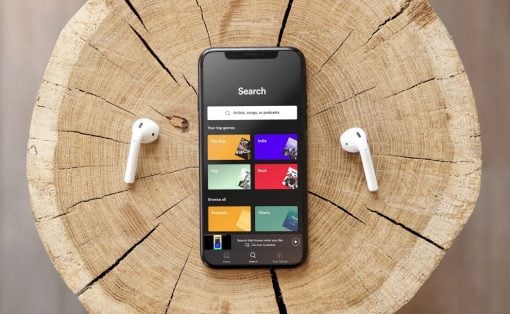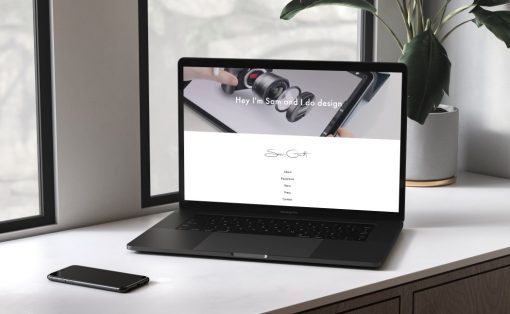One skill many designers should often work on is presentation. Designers of all levels can always benefit from a little more jazz in their presentations.
Don’t know about you guys, but imagining my audience naked never worked for me! The thing to note about presentations is that it is not just about standing up in front of an audience or spending nights rehearsing, presentations are really all about communication. It is about getting your point across in a clear and concise manner.
Here are a few tips that can help improve your technique and hopefully also make you a much better communicator.

1. Stand
Depending on the size of the audience or even the size of the room, it is a lot more impressive if the presenter stands. It denotes expertise, authority and shows your audience that you take the presentation seriously. Even in design critiques with small groups of designers, standing makes a difference.
Another thing I really like about standing is that it allows you to be closer to the screen or focal object. While you are there, you can take the opportunity to point directly onto the screen to highlight points. Being that close to the content makes you a lot more engaging.
That being said, try your best to avoid those laser pointers. It sometimes comes across as cold and may alienate your audience. If you need to point at a large screen and you are not tall enough, walk towards the projector source and make a “shadow puppet” with your finger.
2. Eye Contact
Good eye contact is one of the most important things to in a presentation. It engages the audience by allowing them to feel as if you are talking to them and not to your note cards or the floor. It also allows you to control the flow of the presentation by judging their reactions or responses.
Though important, this is also one of the hardest things to do and requires a lot of practice. One trick I’ve learned to help the discomfort is to look between someone’s eyes or focus on one eye rather than both. The worst case is to look over the top of the audiences’ head and below especially if there are women in the audience!
3. Know your content
Nothing breaks the flow of a presentation like a presenter that does not know their stuff. Two things happen as a result. The presenter either hems and haws or drones on and on. Get to know your content well and become the expert.
4. One slide per point
When creating or constructing your presentation, try to keep your slides succinct. I will often go as far as using one slide per discussion point. Oh by the way, please “design” your PowerPoint background and type? We are designers after all.
5. Use stories to engage your audience
Instead of telling jokes to break the ice, one thing I like to do is to elaborate key points by telling stories that put the audience right in the action. It is also a good way to break the flow of technical segments or if you sense that you are losing their attention.
6. Style
Here is one element that will go along way in making your presentation memorable. Give your presentation a dash of style, your style preferred. I like a simple casual style, like positioning myself closer to the audience, sitting on the table or stage, or not using a microphone. Some presenters don’t use slides but only images, some use their hands a lot. I’m sure you can come up with something interesting that you would be comfortable with.
7. Speak slower and clearly
Sometimes we forget that the delivery of the presentation is also just as important. I have found that if you dial down the rate of your speech and focus on clarity, you will make a much better impact. It also helps you to think, as sometimes people tend to speak faster than they think. Another thing to note is the sound of your voice. If your voice is naturally high pitched – try slightly deepening it. The best way to find out is to record your voice and listen.
8. Timing and Pacing
A presentation running on a good rhythm has good timing and pacing. Be fully aware of the time you are taking at different intervals of your presentations and spend more or less time depending on the impact you want to create. Mixing it all up also helps manage monotony. Also take note of the total presentation time you have and plan your delivery accordingly.
Decide upfront if you want to be interrupted during the presentation or to leave questions to the end. If you can think on your feet then it does get audience participation up. If you are not that confident, do announce to the audience that you will only be taking questions at the end. This brings us to the next point.
9. Anticipate the questions
It does help calm the nerves; if you anticipate all the possible questions your audience may ask you during your presentation. It is also great for credibility.
10. Practice
Finally practice, practice and practice! Take the effort to rehearse either privately, in front of a mirror or with your team. If you don’t have the time, I find it useful to run the entire presentation in your head and visualize your lines. At the end of the day though nothing beats real practice.
———-
Brian is a multidisciplinary industrial design leader that goes under the pseudonym of “The Design Translator”. He muses about the art of design leadership and the business of strategic industrial design over at his website Design Sojourn. He often laments the lack of good soy mochas and Italian pizzas (with Rocket and shredded Parma ham) in Asia.





